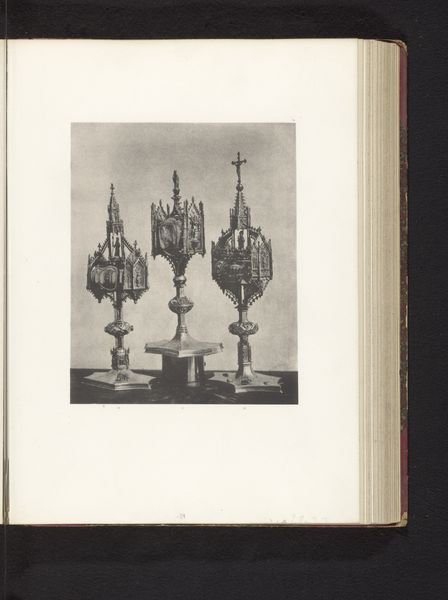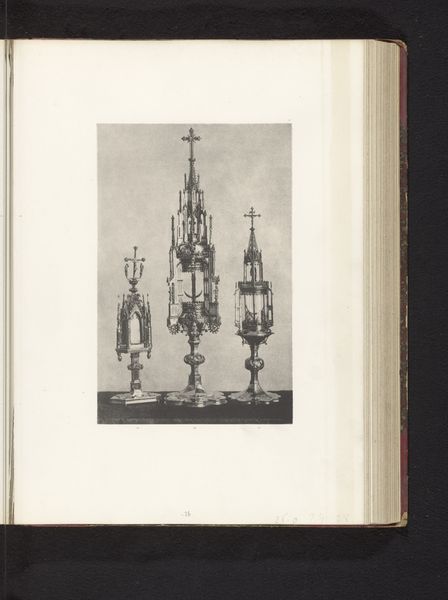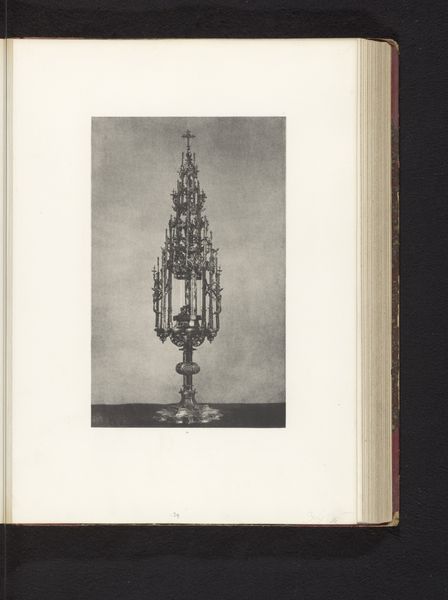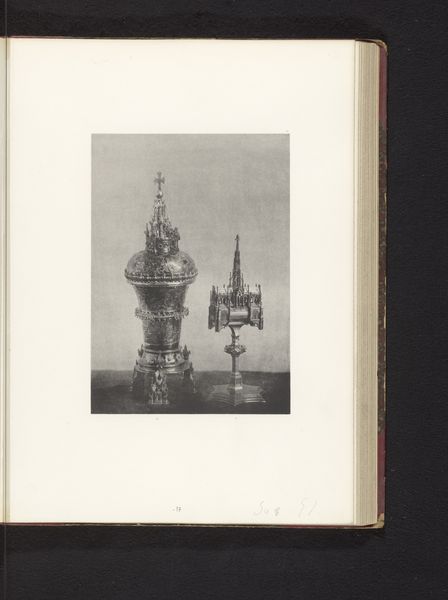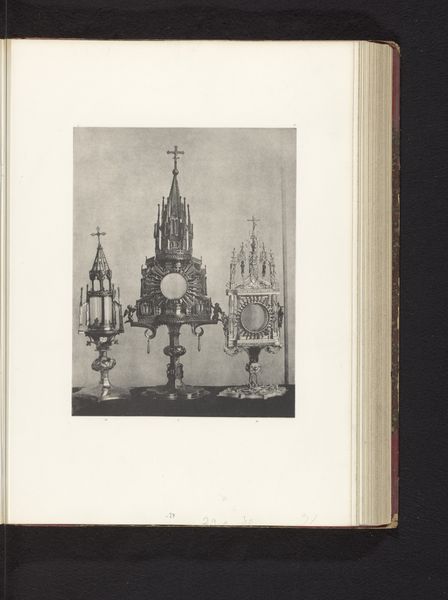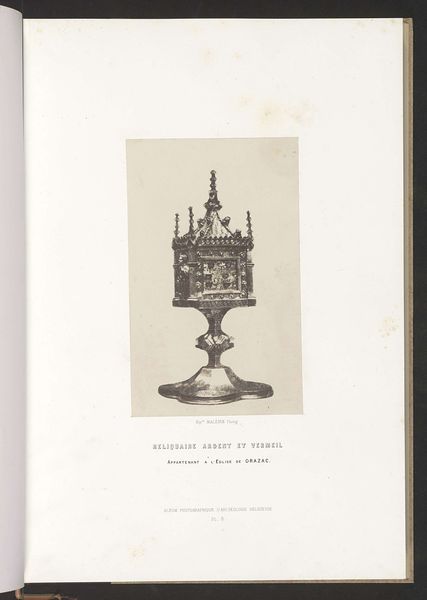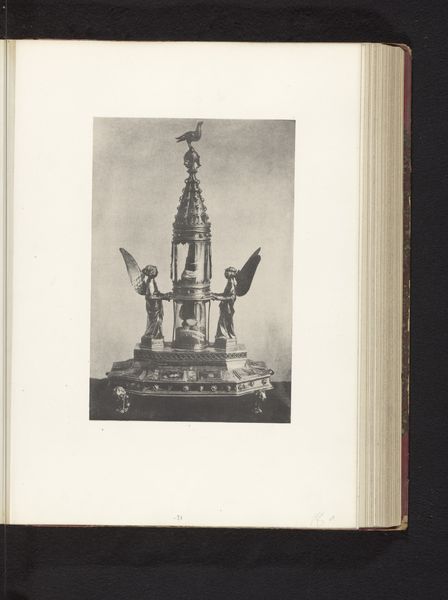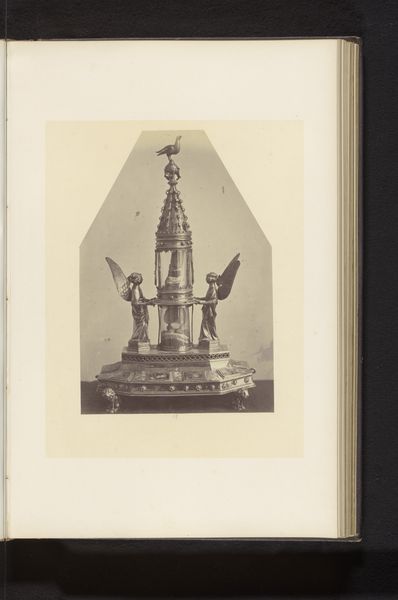
Twee deels vergulde zilveren monstransen, opgesteld op een tentoonstelling over religieuze objecten uit de middeleeuwen en renaissance in 1864 in Mechelen before 1866
0:00
0:00
silver, print, metal, photography
#
medieval
#
silver
# print
#
metal
#
photography
Dimensions: height 256 mm, width 170 mm
Copyright: Rijks Museum: Open Domain
Here, Joseph Maes captured two partly gilded silver monstrances displayed at an exhibition in Mechelen in 1864. These vessels, designed to hold the Eucharist, are not merely containers but powerful symbols. The radiant, sun-like form echoes ancient solar deities, a motif transmuted into Christian iconography to represent divine light and the body of Christ. Observe how the monstrances, with their intricate, towering structures, resemble miniature cathedrals. This architectural echo is no accident; it reflects the Church's ambition to be seen as the ultimate authority, the house of God on earth. Consider the cross atop each piece. This symbol, once an instrument of torture, has been transformed into an emblem of salvation. Such a metamorphosis reveals the human capacity to reinvest objects with new meanings, shaping our collective memory and subconscious understanding. It is through these layers of symbolism that we engage with art on a profoundly emotional level. The cyclical progression of symbols like these shows how cultural memory evolves. Motifs resurface across time, adapted to new contexts yet retaining echoes of their origins, constantly reshaping our understanding of the sacred.
Comments
No comments
Be the first to comment and join the conversation on the ultimate creative platform.

